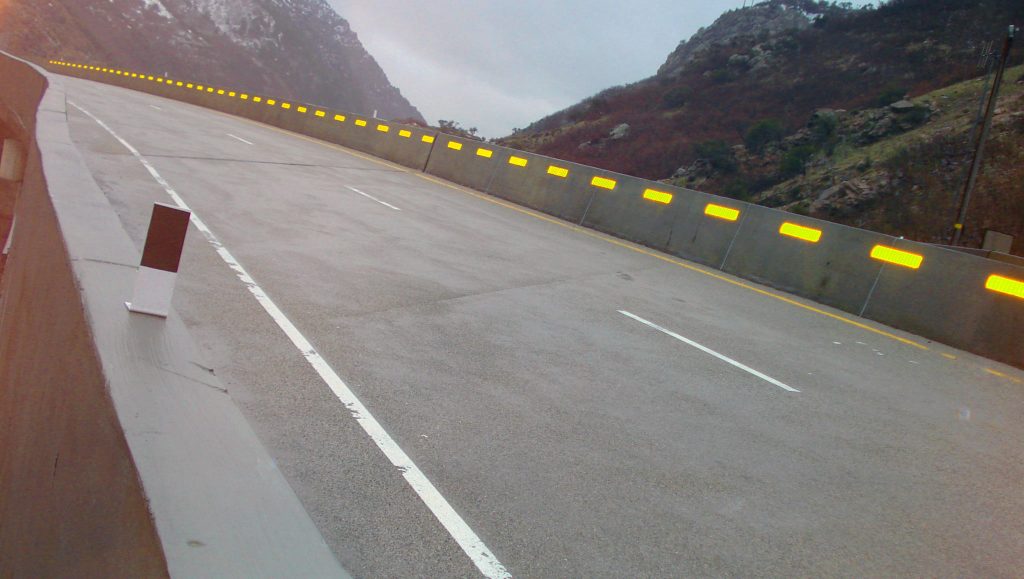First Line of Defense
December 20, 2011
Getting the bond right is critical when it comes to installing a protective bridge deck overlay.
Bridges are important assets to Utah’s transportation system. Prolonging the life of bridges gives taxpayers the best bang for the buck since premature replacement can be expensive and inconvenient for road users.

“Bridge decks are the first line of defense for the whole bridge,” explains engineer Joshua Sletten, Structures Design Manager at UDOT. Bridges are designed to last for 75 years but the life of the deck is much shorter – about 40 years. Utah’s weather and salt, used in the winter for deicing, tends to cause decks to deteriorate.
When a bridge deck overlay is sealed improperly, water carries salt and impurities from the road where it pools between the overlay and the concrete. The freeze-thaw cycle can crack the concrete, allowing salt water to seep in and corrode the steel reinforcement. “Salt basically speeds up deterioration and corrodes steel at a ratio of about 8 to 1,” meaning that one eight inch of steel will measure one full inch if rusted through, explains Sletten. “Just a little rust will start popping off the concrete.”
UDOT uses a variety of materials to seal and protect concrete bridge decks. Research conducted by University of Utah graduate student Erica Weber, P.E. shows the role of careful application in applying polymer overlay systems to full-depth pre-cast bridge decks.
Weber conducted tests to evaluate bonding strength in a laboratory and on actual bridge decks. In the lab, she used test decks with polymer overlay material, typical of the products UDOT uses, applied according to manufacturer’s directions. Weber simulated traffic by applying static and cyclical deflection to the test decks. To check for salt penetration, test decks were submerged in a chloride bath (chloride is the culprit chemical in salt).
Weber also conducted tests to simulate lifting and placement of precast panels to evaluate how deck overlays perform during Accelerated Bridge Construction methods. ABC methods can include constructing bridges off-site and moving structures into place or using pre-cast components trucked to the site.
ABC Bridges on I-84 served as the subjects of real-world tests. Weber tested the deck overlay for bonding strength by taking samples and pulling off the overlay. Since the tensile strength of the epoxy overlay bond is greater than the tensile strength of concrete, Weber was looking for concrete failure during the pull-off tests; failure in the concrete demonstrates that the epoxy bond is not the weak point, explains Sletten.
Weber found that bond strength of the overlay on the test decks was stronger than the I-84 bridge decks. Her test results show that installers need to strictly follow manufacturer’s guidelines for bridge deck application.
“It’s an ongoing challenge for us to figure out how to protect these decks because decks protect everything else,” says Sletten. He explains that if installers aren’t careful to get the bond right, a bridge deck won’t hold up to traffic and Mother Nature, making the entire bridge vulnerable.
